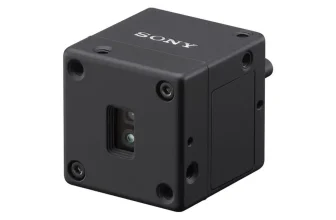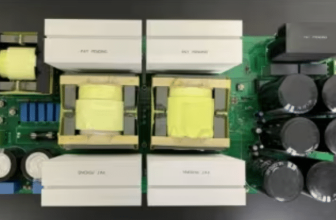
Check out our latest products
The design measures electricity use and checks power quality. It works in meters, analyzers, and EV or AC charging stations.
TIDA-010244, the reference design from Texas Instruments (TI) supports Class 0.2S three-phase energy measurement using an isolated, high-performance multichannel ADC. It samples shunt current sensors at 4kHz to measure current and voltage on each AC mains line. The design maintains high accuracy across a wide current range (0.05A to 100A) and enables higher sampling rates needed for power quality features like harmonic analysis. When paired with a TI Arm Cortex-M0+ microcontroller, it supports faster ADC sampling rates up to 16ksps for metrology calculations. The reference design is suitable for applications such as electricity meters, power quality meters, power quality analyzers, and AC charging stations.
The reference design is built with four 4-channel standalone isolated AMC131M03 ADCs and a cost-effective MSPM0G3507 microcontroller (MCU). It is suitable for energy metering applications in devices such as EV chargers and AC wallboxes. In this design, three isolated ADCs are used to measure voltage and current on each phase (A, B, and C), while a non-isolated ADC monitors the current on the Neutral line using a shunt.

The firmware supports the calculation of a wide range of metrology parameters for 3-phase and Neutral line measurement. These include total and per-phase active (kWh), reactive, and apparent energy with pulse output signals; total and per-phase active (kW), reactive, and apparent power; per-phase RMS voltage and current; power factor; and line frequency. These values can be viewed using a calibration GUI or through ACT and REACT pulse outputs connected to a reference test system.
The growing demand from utility providers and customers for advanced features in electricity meters is pushing the need for more capable solutions. As accuracy standards rise and processing requirements become more complex, it is increasingly challenging to meet these demands using a single metrology system-on-chip (SoC).

A common solution is to pair a standalone ADC with a host microcontroller (MCU), allowing designers to address both the processing and accuracy limitations of traditional electricity meter SoCs. This dual-chip approach gives flexibility to choose the best combination of ADC and MCU, enabling optimization for either cost or performance depending on the application needs.
Beyond electricity meters, this single or multiphase ADC architecture is also well-suited for power quality analyzers, power quality meters, and EV chargers or AC wallboxes. These devices help utilities and industrial users monitor and manage power quality by measuring parameters such as voltage harmonics, current harmonics, voltage dips, voltage swells, and other disturbances.
Accurately calculating these power quality parameters requires significant processing power, along with high measurement precision. This makes the use of a standalone ADC combined with a separate host MCU or MPU an effective solution, as seen in this design. This approach provides the flexibility and performance needed to meet the accuracy and computational demands of power quality applications.
TI has tested this reference design. It comes with a bill of materials (BOM), schematics, assembly drawing, printed circuit board (PCB) layout, and more. The company’s website has additional data about the reference design. To read more about this reference design, click here.


![[5G & 2.4G] Indoor/Outdoor Security Camera for Home, Baby/Elder/Dog/Pet Camera with Phone App, Wi-Fi Camera w/Spotlight, Color Night Vision, 2-Way Audio, 24/7, SD/Cloud Storage, Work w/Alexa, 2Pack](https://m.media-amazon.com/images/I/71gzKbvCrrL._AC_SL1500_.jpg)



![[3 Pack] Sport Bands Compatible with Fitbit Charge 5 Bands Women Men, Adjustable Soft Silicone Charge 5 Wristband Strap for Fitbit Charge 5, Large](https://m.media-amazon.com/images/I/61Tqj4Sz2rL._AC_SL1500_.jpg)





